- Author Harold Hamphrey [email protected].
- Public 2023-12-17 10:06.
- Last modified 2025-01-24 11:10.
The Dutch house in Kuskovo is a small building made of red-brown brick, hidden in the depths of the alleys of the estate of Count Sheremetev. The architecture lacks excessive splendor and pretentious style. The house has a durable finish, thanks to which it has retained its impeccable appearance to this day.
Where is it
The house is part of the Kuskovo estate and is located in Moscow on the territory of the Veshnyaki district. It is located at: Yunosti street, 2.
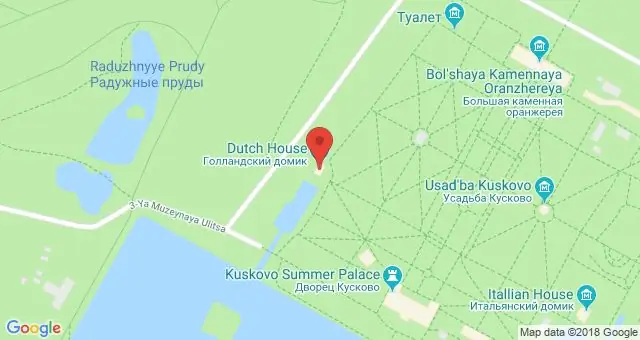
How to get there
The closest metro stations to the Kuskovo estate are st. "Ryazansky Prospekt" and "Novogireevo". They are quite far from the museum, so you will have to continue on your way by bus or on foot.
From the station "Ryazansky Prospekt" the trip will take about ten minutes. To do this, you need to take the bus number 133 or 208 and get off at the Kuskovo Manor stop. From the metro station "Novogireevo" you can walk or take a trolleybus 64 or buses 615, 247. From "Vykhino" - by bus number 409 or620.
If you need to get to the Kuskovo estate from the metro stations "Shchelkovskaya" or "Shosse Entuziastov", you can take either bus 133 or fixed-route taxi 157M. The museum is located close to the stop, you can walk. The journey will take one minute.
History
Dutch houses became popular in Russia during the reign of Peter the Great. It was he who introduced this fashion by building a house in St. Petersburg, which was a copy of his home in Zaandam.
The emperor was fascinated by the architecture of this small but picturesque country and wished to recreate its likeness in Russia.
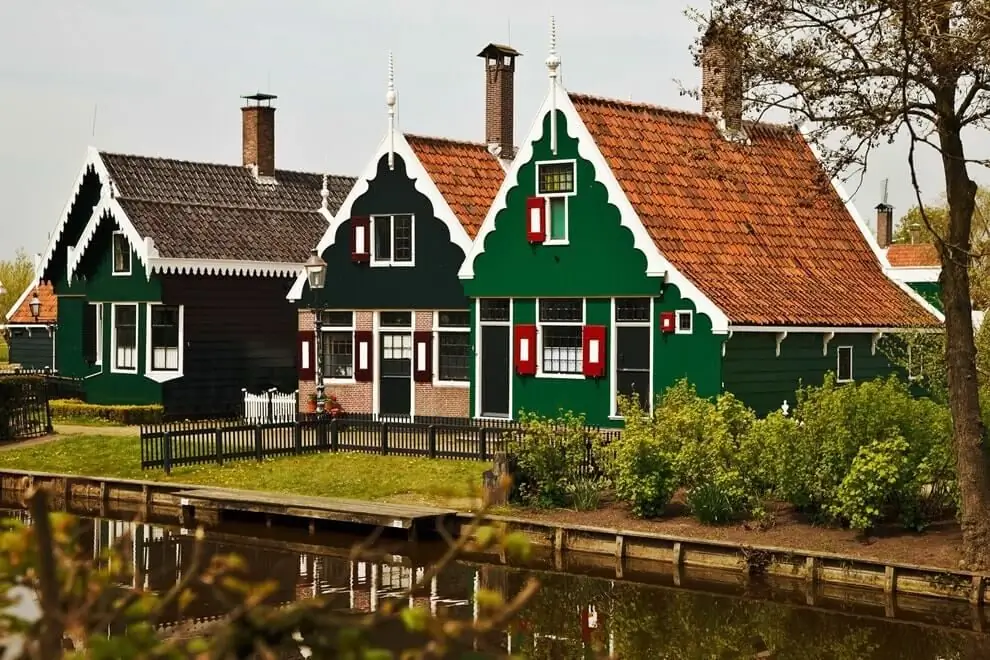
A royal Decree was given, which commanded all houses to "paint in brick in the Dutch manner." The drawing was applied over the plaster.
The Dutch house in Kuskovo was erected by Count Pavel Borisovich Sheremetev in 1749, as evidenced by the inscription on the facade. Despite the fact that the building dates back to the middle of the eighteenth century, it is a tribute to the fashion introduced by Peter the Great. The house served as an entertainment pavilion for guests and demonstrated the life and culture of the Netherlands.
The building has a complete artistic appearance. Guests at the entrance to the estate saw it first of the entire ensemble of such buildings. It was considered the main pavilion.
Tea was served here, visitors had the opportunity to have a bite to eat and relax, interrupting for some time their walk through the beautiful park of the estate. That is why the kitchen is located on the ground floor of the Dutch house. On the top ishall with dessert room.
In 1975, the shooting of the feature film "Hello, I am your aunt" was carried out in the Kuskovo estate. The house acted as the home of Colonel Chesney. Today it houses a museum.
Description
The Dutch house is a red-brown building with a stepped facade. It is made in a simple style and is an exact copy of the buildings of the Dutch cities of the seventeenth and eighteenth centuries. The facade is painted according to the requirements of Peter the Great. The house has two floors. The windows and stepped gable are also in keeping with the stated style.
The opposite side of the house looks different than the front facade. Here you can see the colonnade and the balcony, which can be accessed from the main hall.
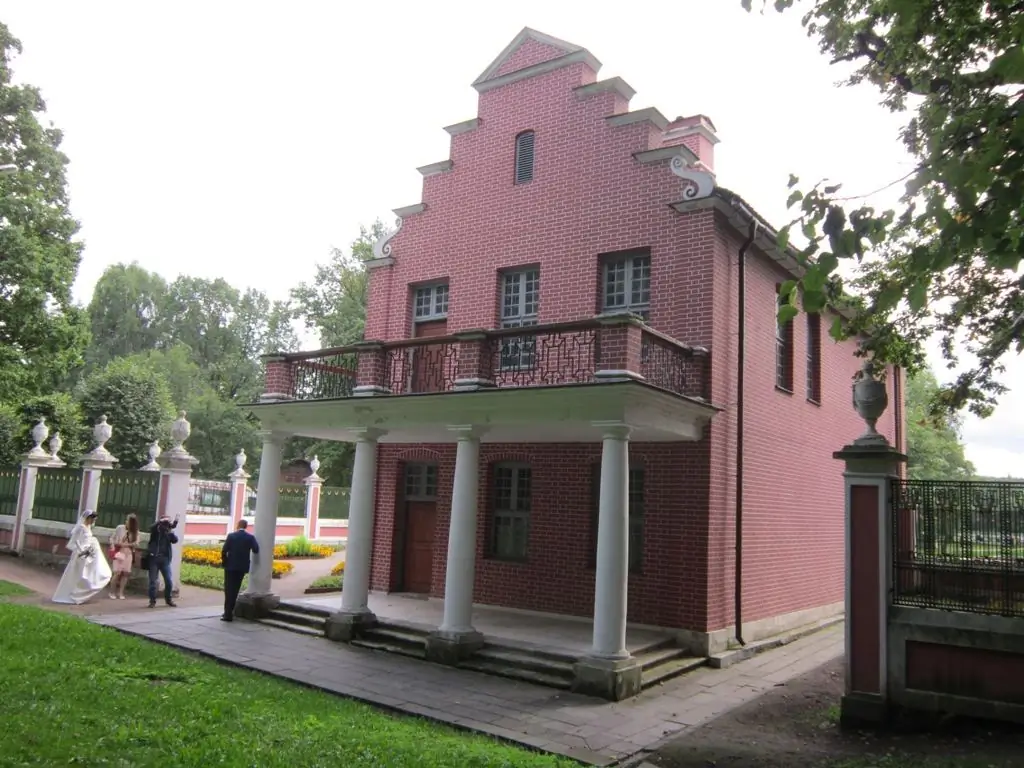
There are flower beds near the house. They are arranged in such a way that they make up a pattern that is viewed from a bird's eye view. Today, hyacinths of different varieties and colors are grown in the beds.
The Dutch house is surrounded by a fence, behind which there is a garden. Previously, tulips were grown here - a symbol of the Netherlands, there was a small garden. This was done to simulate a street. This whole complex is located on the coast of a small Dutch lake, across which a drawbridge is thrown. This creates the effect of being on the streets of the country beloved by Peter the Great. During the heyday of the estate, carps were bred in the pond, which swam up to feed, reacting to the ringing of the bell.
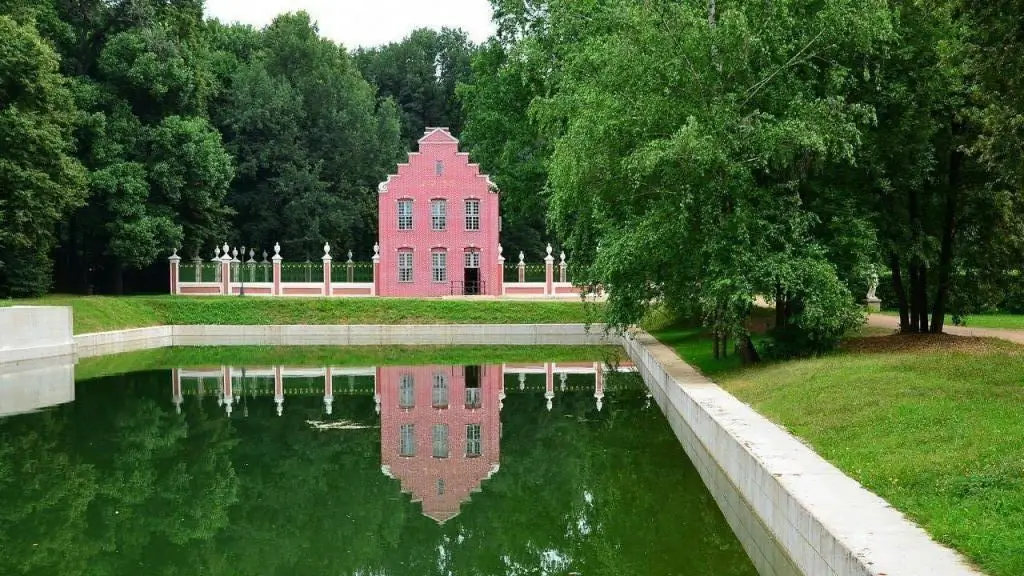
Interior decoration
Going intoDutch house, guests enter a small canopy. From here you can go to the kitchen, located here, on the ground floor. This is the largest room in the building. At its end is a hearth of impressive size. Under the rooms in the past there was a fireplace shaft that occupied the entire basement. The house had a unique ventilation system, but it has not been preserved to this day.
Climbing the oak staircase, visitors find themselves in a spacious living room.
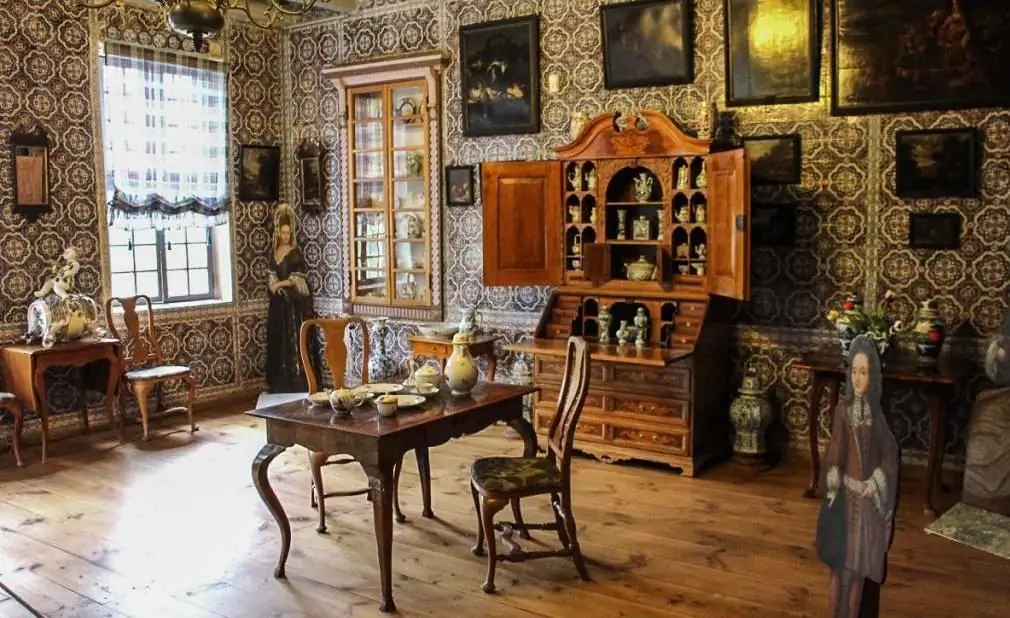
In the room you can see eighteenth century paintings by Dutch and English artists. The same paintings are presented on the stairs leading from the first floor. Despite the fact that the house is equipped in the Dutch tradition, in the living room you can see a fireplace with Chinese painting, which was made by German craftsmen. The window of this room offers a picturesque view of the pond.
The dessert room is a narrow space. The first thing that catches your eye here is the massive gilded carved supporting part of the table, on which items of a chic service are placed.
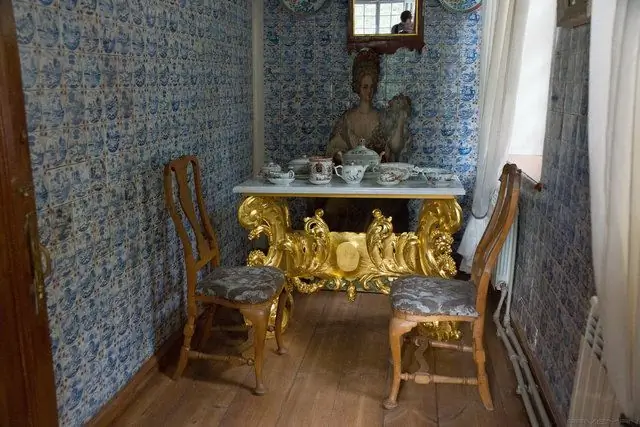
The Dutch house is world famous for its outlandish little things like a caged bread box and a sharkskin-covered chest in the kitchen. Pewter is fully consistent with the customs of the Dutch family.
The walls of the kitchen are tiled. Each tile depicts drawings of rural life. In the living room, the walls are decorated with darker colored tiles with patterns. They are called carpet and brought from Rotterdam. ATIn Holland, in order to save money, such tiles were used interspersed, while Sheremetev covered all the walls with them. A total of 10,000 tiles were used, which is considered a luxury.
The interior of the Dutch house in Kuskovo is unpretentious: solid furniture, heavy wooden beams and old parquet. In all this brutal frame, real treasures are stored - magnificent porcelain from around the world, which reminds of the decorative purpose of the room.

Despite this, here you can feel the warmth and comfort inherent in a lived-in home. The mantelpiece is lined with vases and figurines painted in traditional Dutch blue patterns.
Museum opening hours and tour prices
You can visit the Kuskovo estate from 10:00 to 20:00. The museum is closed on Mondays and Tuesdays and on the last Wednesday of the month. The box office is open until 19:30.
Visiting this beautiful place for a walk and spending leisure time is quite affordable for both residents of Moscow and guests of the capital. The cost of an entrance ticket for adults as of 2018 is 100 rubles. For children, students, large families, pensioners and the disabled, a 50 percent discount is provided.
A visit to museums costs from 150 to 250 rubles. You can buy a single ticket for 700 rubles. In this case, the opportunity to visit all museums and exhibitions on the estate will be open.
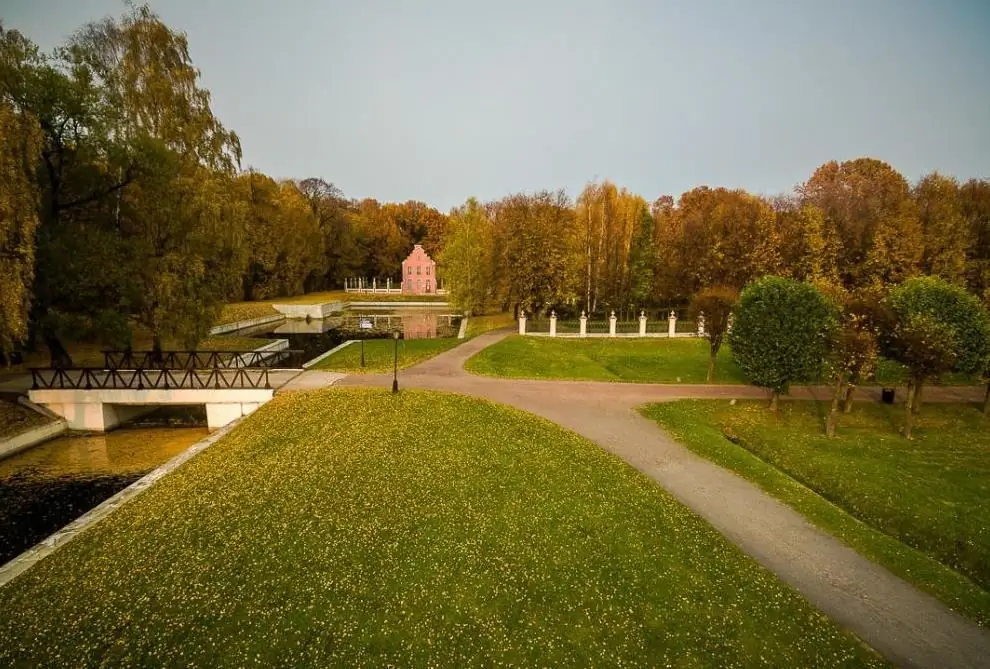
Reviews
According to people who have visited this historical place, the estate in Kuskovo is a great place to relax. Exceptvisiting the museum and visiting ancient monuments, here you can ride a boat on the pond and canal, take a walk, feed the squirrels, and go skiing in winter. There are cafes and barbecues on the estate.
According to reviews, the Dutch house creates an atmosphere of antiquity, plunging into which, you can forget about your stay in modern Moscow and mentally transport yourself to another century.
Many people consider this park the best in the capital and the Moscow region and recommend visiting it. It is a great place for photo shoots, but filming exhibitions is strictly prohibited. Free parking is located in front of the main entrance.
There are a lot of visitors to the park on weekends. In addition to tourists and vacationers, this place is often visited by newlyweds with their guests. Every third Sunday of the month, everyone is invited to visit the museum for free.
There are no negative reviews about staying at the Dutch House in Kuskovo. The only shortcomings noted are crowding and lack of free parking spaces on weekends.
Recommendations
Tourists are advised to visit the estate with a guided tour, as this place is associated with many interesting historical facts that can be easily overlooked when walking here alone. It is also recommended to purchase a complex ticket, which gives you the opportunity to visit all the museums of the estate.






